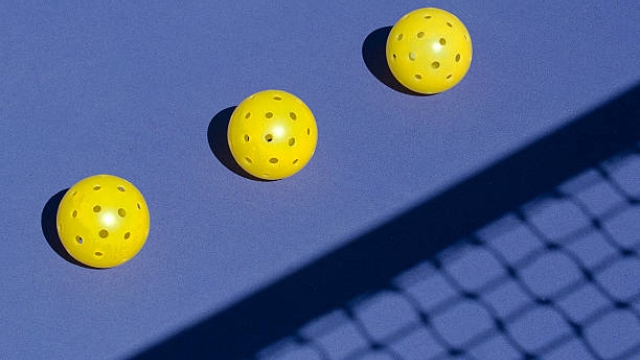In recent years, a seemingly simple game has taken the world by storm, captivating players of all ages and skill levels. Pickleball, a blend of tennis, badminton, and ping pong, is sweeping across parks, community centers, and backyards everywhere. As this exciting sport continues to gain popularity, it is prompting a new wave of enthusiasts eager to embrace the fun, fitness, and camaraderie that pickleball offers.
What makes pickleball so appealing? The answer lies in its accessibility and the social atmosphere it fosters. With easy-to-learn rules, smaller courts, and lightweight paddles, it invites both seasoned athletes and complete novices to join in the action. Whether you’re seeking a competitive edge or simply looking for a way to stay active and meet new friends, pickleball has something for everyone. Join the craze and discover why this game is swiftly becoming a favorite pastime across the nation.
The Rules of Pickleball
Pickleball is played on a rectangular court, usually measuring 20 by 44 feet for doubles matches, with a net height of 36 inches at the ends and 34 inches in the middle. The game begins with an underhand serve that must clear the non-volley zone, also known as the kitchen, which is the seven-foot area near the net. The server must strike the ball below their waist, and it must land within the diagonal service court of the opponent. Both players on the receiving team must allow the ball to bounce once before returning it, ensuring a fair and strategic play.
After the serve, players can volley the ball or let it bounce, but they must avoid stepping into the non-volley zone while executing a volley. If a player steps into the kitchen to hit a volley, it results in a fault and the point goes to the opposing team. Scoring in pickleball is unique, as only the serving team can earn points. A game is typically played to 11 points, and a team must win by at least two points. Tournament formats may involve games to 15 or 21 points, but the two-point margin still applies.
In terms of faults, there are several ways a point can end, including if the ball lands out of bounds, if a player fails to serve properly, or if a player makes a fault on their return. Understanding these rules is crucial for both new and seasoned players to enhance their strategy and enjoyment of the game. With a mix of skill, agility, and teamwork, pickleball offers a fast-paced experience that keeps players coming back for more.
Health Benefits of Playing
Engaging in pickleball is an enjoyable way to boost physical fitness and overall well-being. The sport combines elements of tennis, badminton, and table tennis, making it a great cardiovascular workout. As players move around the court, they engage in quick sprints, lateral movements, and reflex-driven actions, which help improve stamina and cardiovascular health. Regular participation can lead to better heart health, lower blood pressure, and increased endurance.
Beyond physical fitness, pickleball also promotes mental health. The strategic nature of the game requires players to think on their feet, enhancing cognitive function and focus. Social interaction is another key aspect, as playing with others builds community and strengthens relationships. This social component contributes to reduced feelings of isolation and depression, making the game not only a physical activity but also a source of emotional support and connection.
Lastly, pickleball is accessible to people of all ages and fitness levels. The smaller court size and lighter paddles make it easier on the joints compared to more high-impact sports. This inclusivity allows individuals to enjoy the game for longer periods, maximizing the health benefits. Whether you are a seasoned athlete or just starting out, pickleball offers a fun way to stay active and healthy while building friendships along the way.
Community and Social Aspects
Pickleball has transformed into more than just a sport; it has become a community hub for players of all ages. The social nature of the game encourages interactions among participants, fostering friendships that extend beyond the court. Local clubs often host social events, tournaments, and clinics, allowing players to connect and engage with one another in a friendly and inviting environment. This communal aspect makes it easy for newcomers to feel welcomed and included, regardless of their skill level.
The inclusivity of pickleball is one of its most appealing features. Players can easily adapt the game to suit various abilities, making it accessible to everyone from children to seniors. This adaptability not only ensures that people can play together but also promotes a sense of camaraderie. Many communities have embraced pickleball as a way to bring together diverse groups of people, creating a supportive atmosphere where players can share experiences, tips, and encouragement.
Moreover, the rise of pickleball has led to the formation of numerous leagues and meetups, further enhancing its social dimension. These organized activities allow participants to compete, socialize, and improve their skills in a relaxed setting. As more people join the craze, the pickleball community continues to grow, providing a platform for social interaction and teamwork that enriches the lives of its members.
Getting Started with Pickleball
If you’re eager to dive into the world of pickleball, the first step is finding a court near you. Many community centers, parks, and sports clubs have designated pickleball courts, but it’s also common for tennis courts to be converted for pickleball use. Check local listings or online platforms to locate sessions or events happening in your area. You can also find groups on social media that organize games for players of all levels.
https://playatpac.com/
Once you’ve located a court, it’s time to gear up. While pickleball can be played with comfortable athletic wear and any type of shoes, investing in a good paddle and some pickleballs can greatly enhance your experience. There are various paddles available, catering to different skill levels and playing styles. Beginners may benefit from lighter paddles that offer more control, while experienced players might prefer heavier paddles for better power.
Joining a local league or taking lessons can also be a fantastic way to start. Many clubs offer beginner clinics that focus on the fundamental skills and rules of the game. These sessions not only teach you how to play but also provide an opportunity to meet fellow players and develop friendships. As you learn and improve, you’ll find yourself immersed in the lively and welcoming community that surrounds pickleball, making your journey into the sport even more enjoyable.




